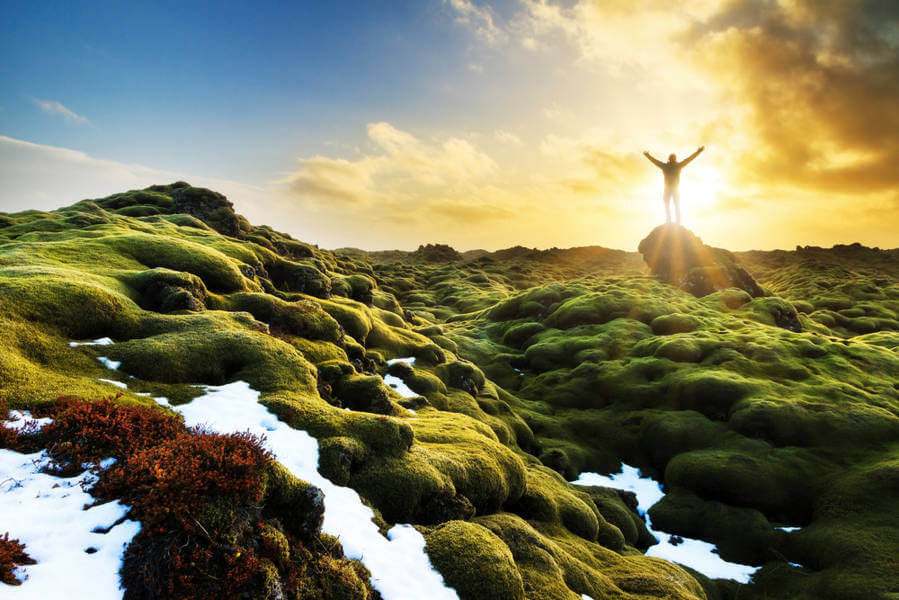Consider doing a road trip around the island in November? Well, in the wise words of an old Kung Fu classic: “You have done well, Grasshopper.” There are many advantages to exploring the island in November (and we’ll give you the lowdown on all of them), but you also need to come prepared when planning on driving in Iceland in November, since the country will be heading towards winter.
But with a few of our local insights, tips, and tricks, you’ll be navigating our roads like a pro and get to experience a once-in-a-lifetime road trip adventure through the Land of Fire and Ice. So, if you’re ready to find out what lies in store when driving around Iceland in November, read on!
Why Choose a Road Trip in November?
The reasons for going on an Iceland road trip in November are legion, with the most important being:
- You’ve chosen a shoulder month. This usually means getting a taste of one of our main seasons without the drawbacks or the hefty price tags associated with it. In the case of November, you’ll be able to get a taster of our winter wonderland landscape (especially if you plan on visiting late November or in the northern parts of the country), but without the festive season/New Year crowds or peak season prices.
- While you will be getting a taste of our breathtaking winter landscape, you still won’t need to deal with some of our harsher winter conditions, such as average temperatures of -1 degrees Celsius, blizzards, black ice on the road, and so forth.
- Visiting Iceland in November also means that you get a pretty good deal on daylight hours, especially if you visit in early November. At the start of November, you’ll still have 8 hours of daylight every day to plan a jam-packed trip itinerary. By the end of November, you’ll be looking at 5, so plan accordingly based on what you want to do, see, and experience.
- One of the reasons we say you need to plan your November trip around what you want to do, see, and experience is that the colder and darker it gets later in November, the better your chances of spotting our famous Northern Lights. You’ll also get to explore our magical ice caves that are kept closed throughout our warmer months.
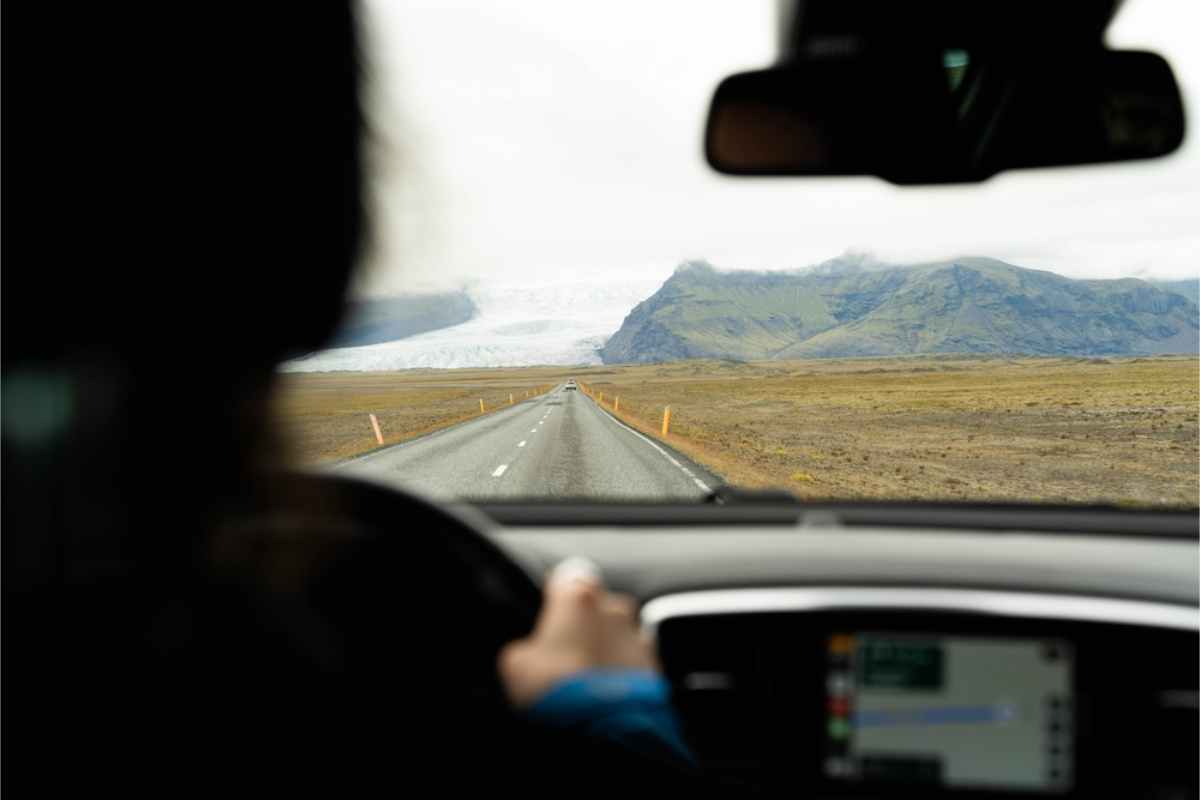
Weather and Road Conditions in November
Here’s a more in-depth look at what to expect when driving in Iceland in November:
Temperature and Climate Overview
November is the gateway to our winter season here in Iceland, so you can expect the Land of Fire and Ice to be more on the icy side. The average temperature is still not at winter levels, though, so you can expect temperatures to range between 1 and 5 degrees Celsius (34 and 41 degrees Fahrenheit).
Our legendary winds have also not reached speeds of 35 kilometers an hour or higher, as they often do mid-winter, so you can expect averages of about 22 kilometers an hour (13.7 miles per hour). You can expect some rain throughout the month, totaling roughly 72.5 mm (2.8 inches), but there won’t be any sleet or snowfall.
However, you still need to remember that the northern parts of the country will always be a bit colder than the rest of the country, and weather conditions can turn harsher quicker.
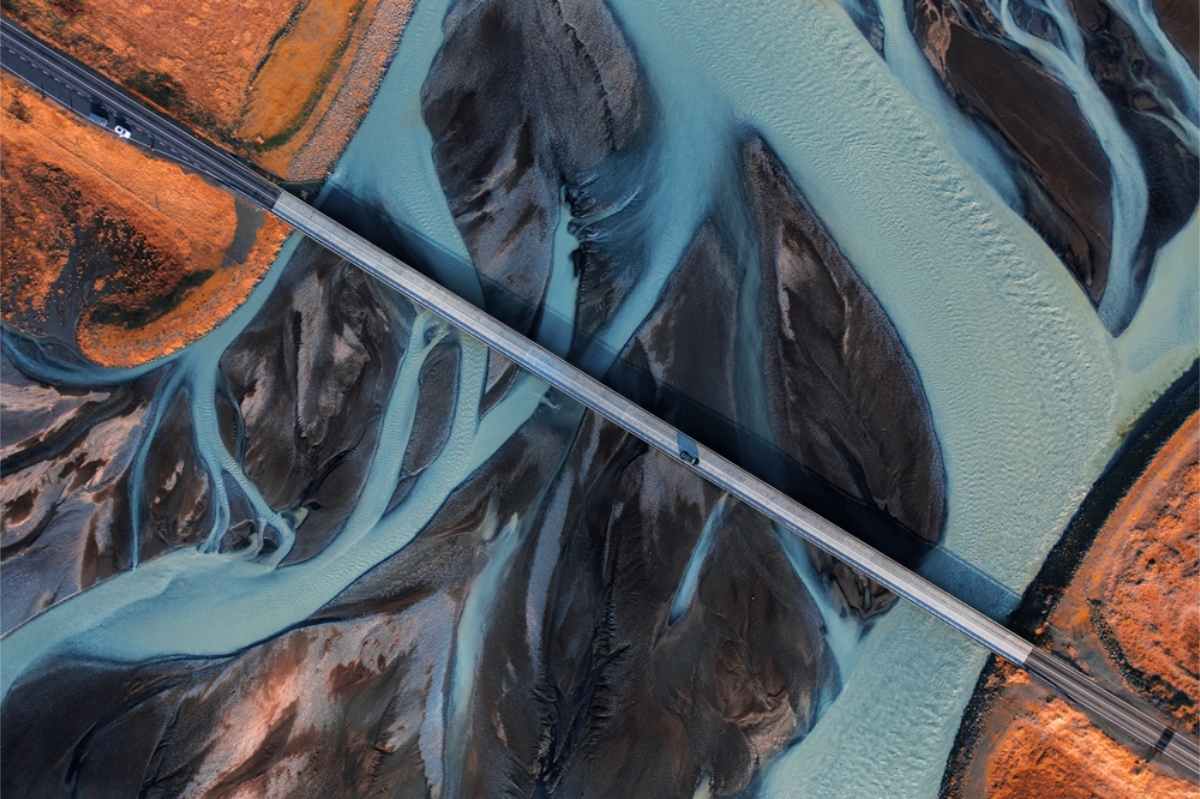
Daylight Hours and Visibility
As we already mentioned, early November offers up around 8 hours of daylight that dwindles down to about 5 at the end of November. A sweet spot to plan a trip itinerary around would be 6 hours of daylight every day.
While you’ll find that Iceland is super prepared for our shorter daylight hours during the colder months, with populated areas lit up like early Christmas lights, remote regions can be plunged into pitch darkness. These are ideal conditions when chasing the Northern Lights, but when it comes to driving around, you don’t want to do that in the dark, especially not in our remote regions, where we do have free-roaming wildlife like reindeer unexpectedly crossing the road.
Since you won’t be subjected to things such as our winter blizzards, you only need to be concerned about our darkness when it comes to visibility. Please do keep in mind that you should have your headlights on whenever you’re driving here in Iceland (day or night) so you can clearly see your surroundings and others can also clearly see you.
Snow, Ice, and Wind Warnings
We have already discussed the weather conditions you can expect when driving in Iceland in November, but what we haven’t discussed yet is that the weather can cause sudden road closures, especially in the north, which is not great when one is road-tripping around the island.
But don’t worry. You can stay one step ahead of the weather and our roads by keeping a close eye on the Vedur and Umferdin websites, and if you keep a flexible trip itinerary, a little road closure here and there won’t derail an entire trip.
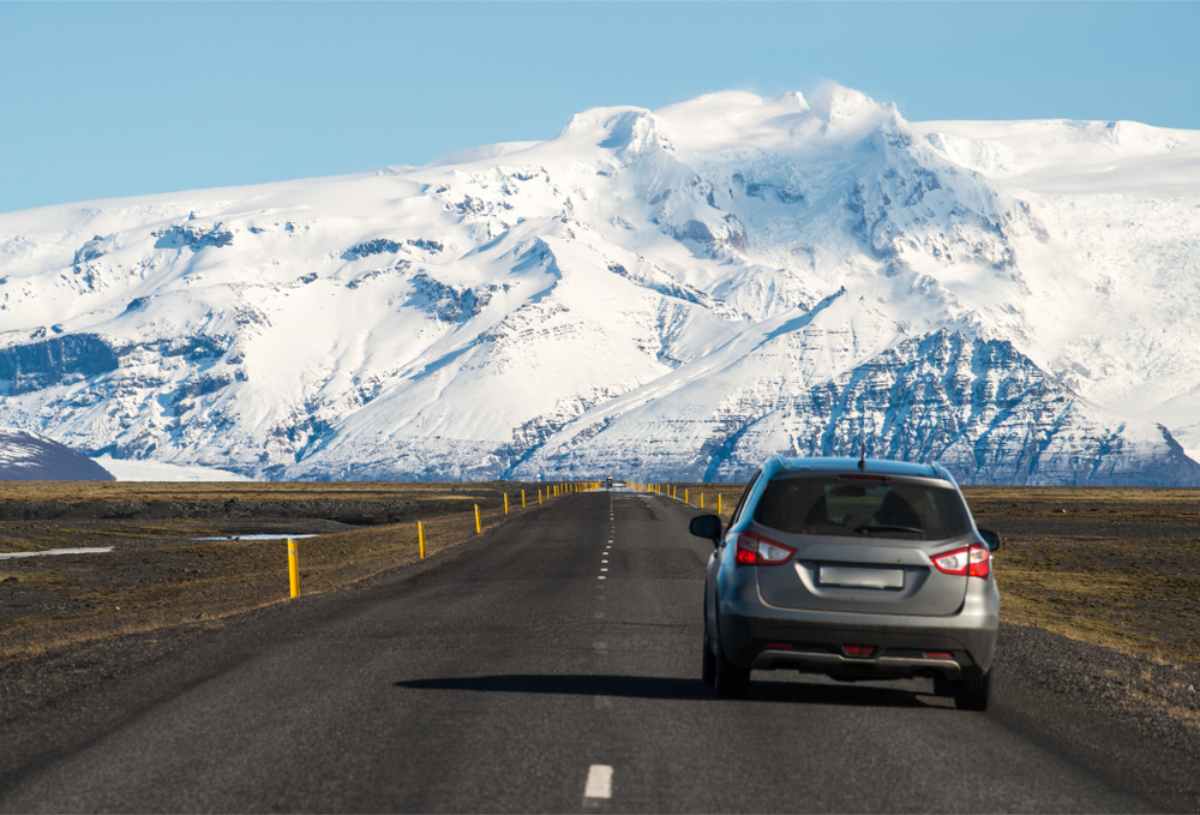
Choosing the Right Rental Car for November
Choosing the right rental car is key to a successful (and safe!) road trip here in Iceland. Here’s what you need to know:
Do You Need a 4x4?
When driving in Iceland in November, this can be a question that’s impacted by a couple of factors. If you plan on sticking to our cities and towns and main roads like the Ring Road (aka Route 1), a compact 2-wheel-drive will be more than sufficient. But just keep in mind that it is legally mandatory to have winter studded tires from November to April.
If you are planning on taking a few of our “roads less traveled,” we do, however, suggest that you go for a 4x4. This way, you’ll have the peace of mind that your vehicle will be able to handle whatever your Iceland adventure throws at you.
Just keep in mind that our more rough-and-tough “roads less traveled” like the F-roads, which legally require you to drive them with a 4x4 vehicle, will already be closed for the colder months, so if you’d like to include the Highlands and the Westfjords on your road trip itinerary, we’d recommend planning your trip during the summertime.
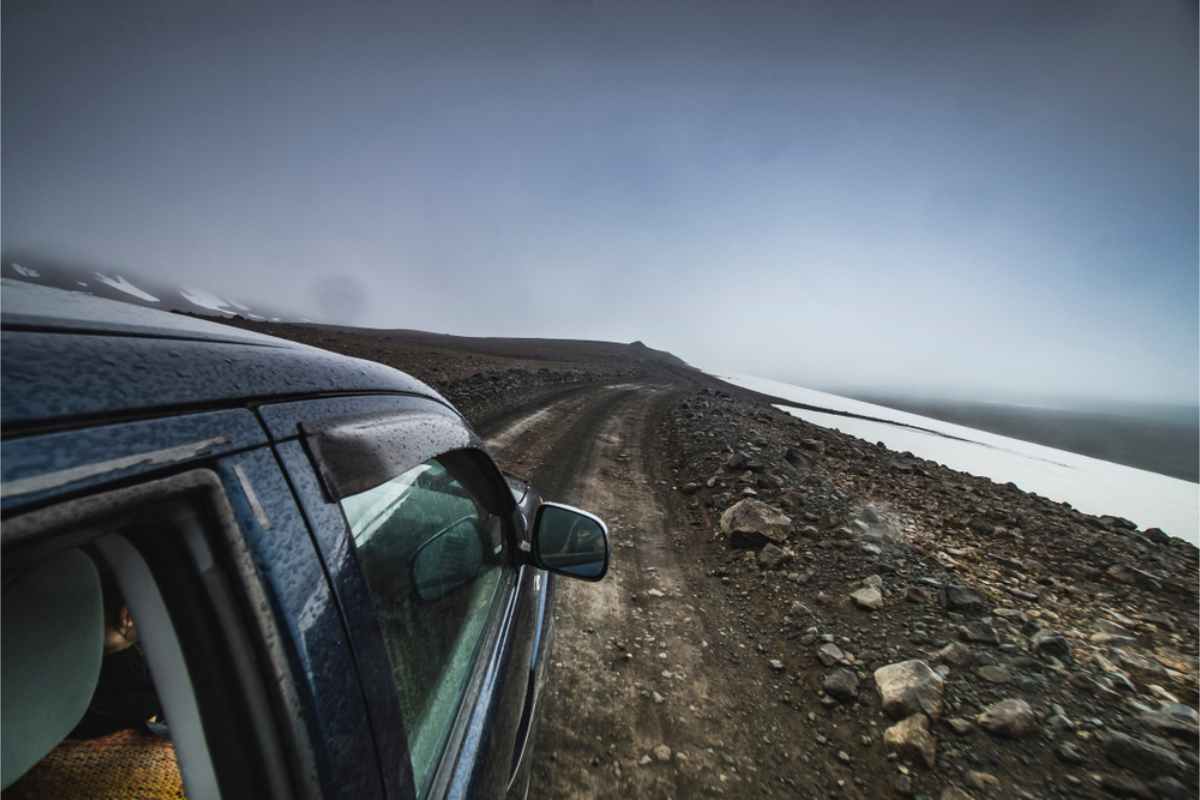
Does Size Matter?
Size definitely matters when it comes to convenience and budget. For example, suppose you’ll just be zipping in and around town. In that case, a compact car will be the most convenient since they’re easier to maneuver. And since compact vehicles are more fuel-efficient, you’ll also be saving on gas money.
However, if you’re planning on embarking on a thorough road trip across the country, you’ll probably need a sturdier vehicle, which usually tends to come in a bigger size. The same goes for if you’re a family or a group of friends traveling together. Neither you nor all your luggage will be able to squeeze into a smaller vehicle.
Renting a car in November: Is It Worth It?
Usually, we wouldn’t recommend an extensive road trip on the island without opting for one of our efficient rental cars, but when it comes to driving in Iceland in November, there are a couple of pros and cons to a car to consider:
Pros
- A rental car still holds the ultimate freedom; you can adapt your route to whatever the weather throws at you.
- You don’t have to rely on pre-booked tours or sit with a strict trip itinerary.
- Prices of car rentals are lower during this season, making it a suitable option for those on a tighter budget.
Cons
- Since it’s technically our off-season, there are a few roads that have already closed for the winter season.
- The weather is tougher, mainly in the north part of the country, so more preparation is needed.
Recommended Car Rental Insurance
Some insurance is mandatory here in Iceland and will be included in your rental package. This is Third-Party Liability Insurance and CDW (Collision Damage Waiver). But if you’re planning on driving in Iceland in November, there may be some additional insurance policies you’d want to take a look at. These include the following:
- (SCDW) Super Collision Damage Waiver –Even with CDW, you’ll still be responsible for a certain percentage of the damage, which is called an excess or self-risk amount. So, SCDW actually lowers this excess or self-risk amount.
- Gravel Insurance – This is precisely what it sounds like, and is crucial if you plan on exploring those “roads less traveled.” Gravel Insurance keeps you covered for any damage caused by gravel or small rocks being kicked up by your own vehicle or those around you.
- Sand and Ash Insurance – Sand and Ash Insurance protects you against damage from both sand and ash. While the “ash” part might feel ominous on the Land of Fire and Ice, you need to remember that an island full of volcanoes means a lot of lava rock and sediment, and ash just lying around. With our legendary winds, sand and ash can become projectiles, causing some serious damage. So, if you’re planning on cruising along our coastlines (where the winds can blow completely unhindered and untamed), Sand and Ash Insurance is a must.
- Theft Protection – Once again, the name says it all.
- Windscreen Protection – Many insurance policies do not actually cover damage to the windscreen. In those cases, it’s a good idea to get Windscreen Protection as an add-on, especially if you’re planning on driving on gravel and other rough-and-tough roads.
With Reykjavik Cars, you may want to add the Platinum Insurance (from 3951 ISK per day / USD 32) as it bundles all of these insurances with a zero deductible.If you are unsure of which additional rental insurance policies you may need, have a chat about it with your rental agent and discuss your planned trip itinerary.
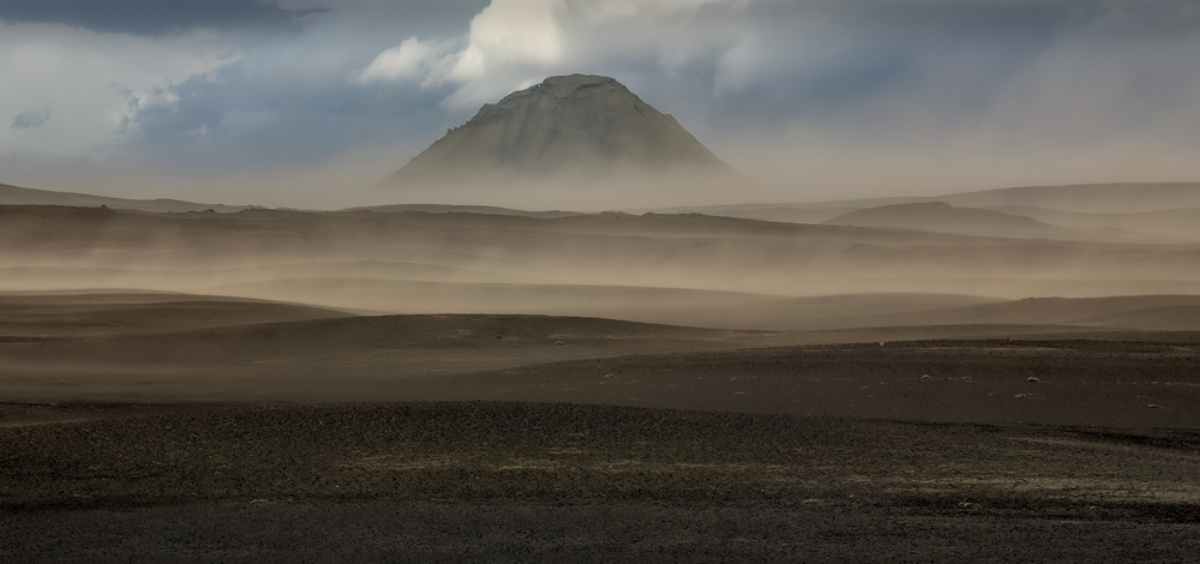
Where to Drive Safely in November
If you’re still feeling a little confused about where the best and safest places to drive in Iceland in November are, we’re giving you the lowdown on where to go and where not to go:
Best Regions to Explore in November
The following roads, routes, and regions are safe to travel during November:
The Golden Circle
This is an excellent alternative to the Ring Road route. The Ring Road is a loop road that wraps around the island, and its northern parts can become quite challenging to drive, especially in late November. The Golden Circle is also a loop road, but it is much shorter. It begins and ends in Reykjavik, making it ideal for those with limited time on the island.
But don’t let the shorter distance fool you; this route is absolutely jam-packed with some of our most famous attractions. This includes Thingvellir National Park (where you’ll find the spot of Iceland’s first parliament), Geysir Geothermal Area (where geysers erupt with hundreds of liters of boiling water shooting meters up in the air), and Gullfoss Waterfall.
The South Coast Way
The South Coast Way is actually the part of the Ring Road that runs along the coastline in the south of the island. As a paved and well-maintained route in the warmer part of the country, you can rest assured that a road trip here should be smooth sailing. The South Coast is also famous for its icy and watery sights and adventures.
This includes Seljalandsfoss Waterfall (also referred to as the one you can walk behind), Skogafoss Waterfall (one of the biggest waterfalls in Iceland), Reynisfjara Black Sand Beach, Jökulsarlon Glacier Lagoon, Diamond Beach, and much, much more.
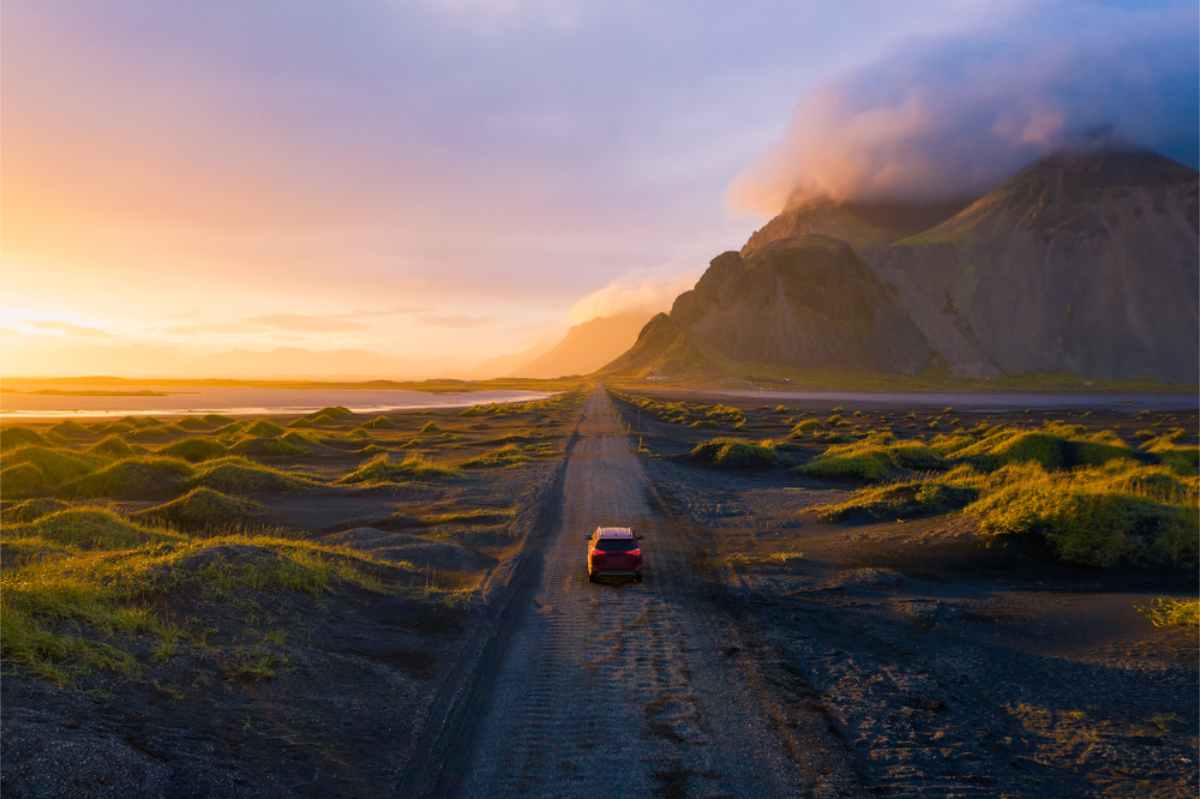
Snæfellsnes Peninsula
Snæfellsnes Peninsula is also called “mini Iceland.” This is because Snæfellsnes has a little bit of everything the island has to offer. That’s why exploring this region is yet another excellent option for those with limited time on the island.
A few highlights of the area include Kirkjufell Mountain (this oddly cone-shaped mountain is Iceland’s most photographed), Londrangar Basalt Cliffs (a favorite among birdwatchers), and Ytri Tunga Beach (famous for its seal colony).
Roads to Avoid this Month
The following roads, routes, and regions are best to steer clear of during November:
The F-roads
As we already mentioned, the F-roads in Iceland are closed throughout the colder months of the year (from as early as mid-September). This is for good reason, so unless you want to wait for our rescue team or remortgage your house to pay the fines, we suggest you don’t chance it.
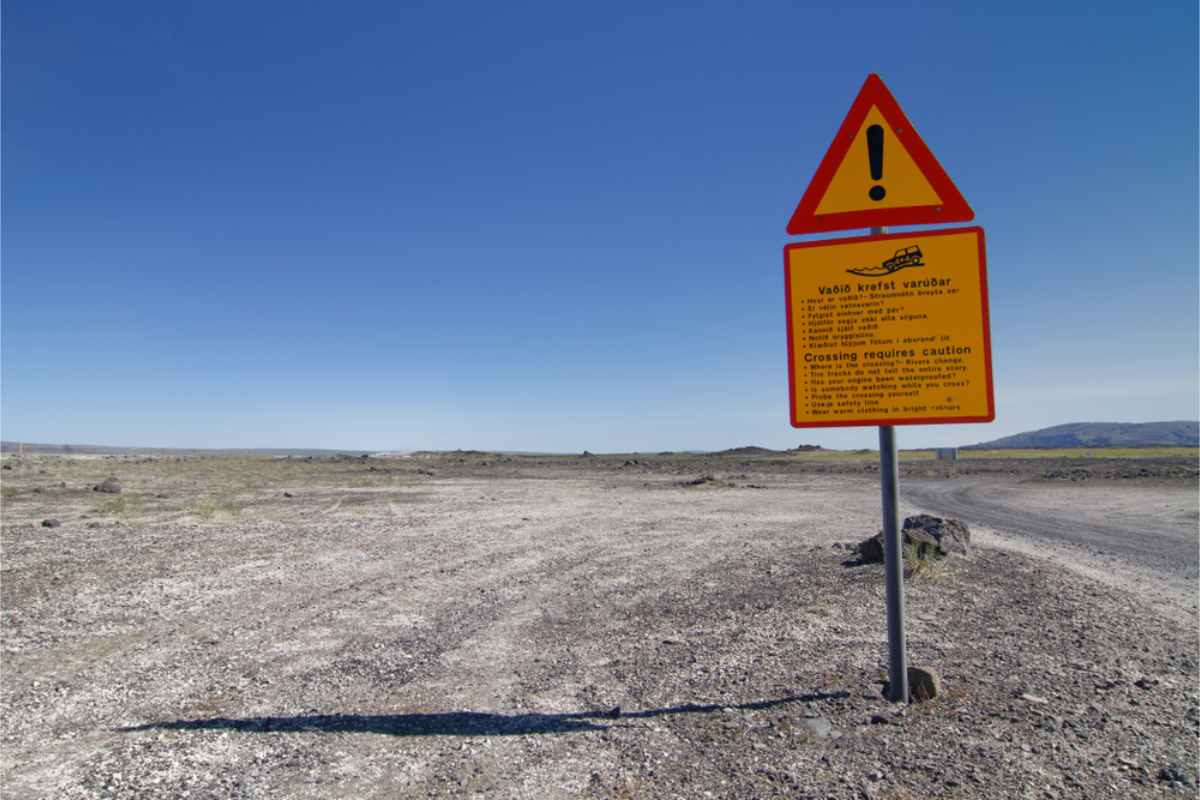
The Highlands and the Westfjords
Except for the F-roads, there are many unpaved, winding, and narrow roads found in these areas that can become extremely challenging to manage in adverse weather conditions. These remote regions are best explored during the summer months.
Our Northern Regions
As already mentioned, the north gets hit harder and earlier with our colder weather conditions. So, if you don’t want to run the risk of sudden road closures and having to change your plans, consider planning a trip to the north for our warmer months.
Essential Driving Tips for November
If this will be your first time driving in Iceland in November, the following tips and advice will be very helpful:
How to Check Weather and Road Conditions
As we already mentioned, Vedur and Umferdin should be your go-tos for real-time updates on road conditions and road closures, weather forecasts, and even Northern Lights forecasts.
How to Drive Safely on Snow and Ice and in Windy Conditions
If this is your first time driving in these conditions, remember the following:
- Slippery roads require patience and no speeding. You may feel a bit of panic or want to speed up the trip, but speeding up might just end up with you on the side of the road. Slow and steady is the way to go!
- Keep a safe(er) distance from the vehicles in front of you. When things get slippery, it’s best to keep some space between each other (much more than usual).
- Equally as important as a slow and steady pace in slippery conditions is not to make sudden, sharp turns or suddenly hit the brakes. These can also cause you to slip and slide across the road.
- When the wind starts howling here in Iceland, ensure you always have both hands on the steering wheel and always hold on tight to the car doors when you open and close them.
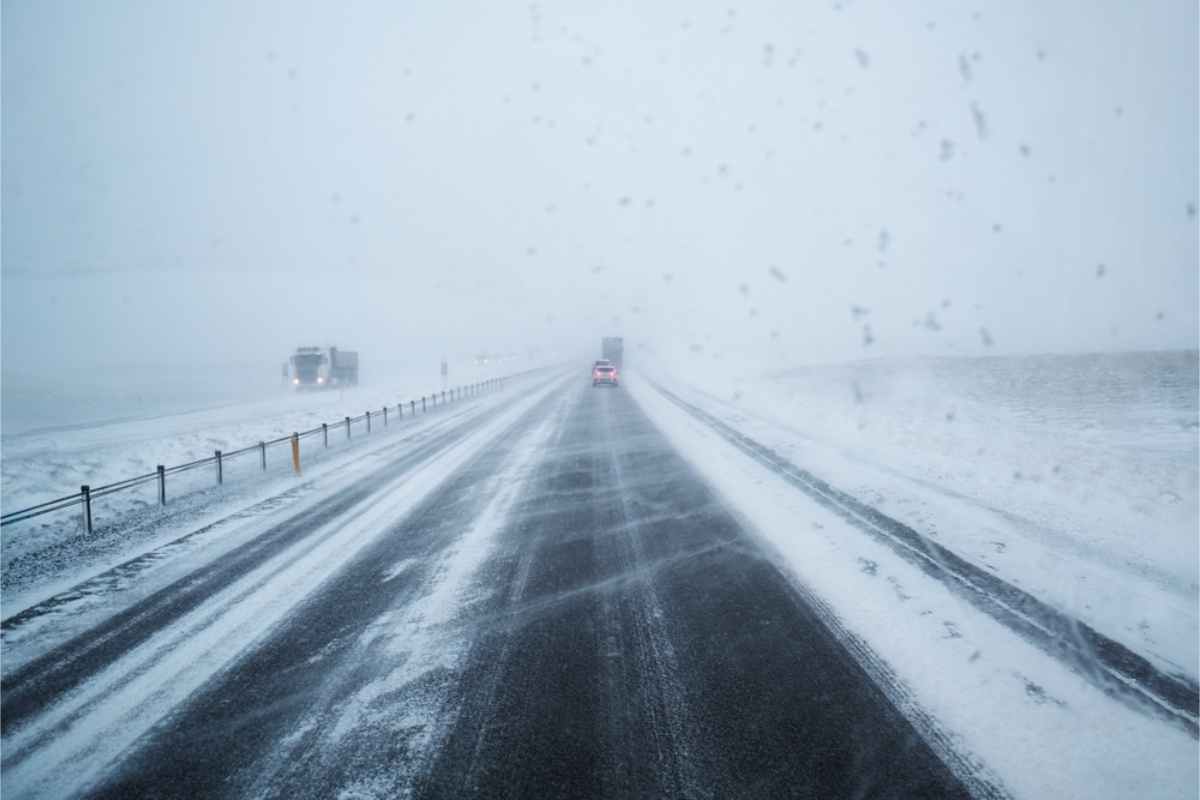
Emergency Kit and Gas Station Planning
When road tripping around the island, it’s always a good idea to come prepared for emergency situations. The first step in doing this is to have an emergency kit consisting of the following:
- An extra blanket or sleeping bag.
- A few extra rations of snacks and water.
- Enough chargers, power banks, batteries, etc. to have a backup if anything gets lost or breaks.
- A little folding shovel (a space-saving tool for when you get stuck somewhere).
- A first-aid kit.
- Another way to avoid an emergency situation is to properly plan out your refuels, especially if you plan on traveling our more remote regions where gas stations can become scarce (more than 100 kilometers apart!). A good rule of thumb is to always ensure you have at least half a tank of gas. The moment it dips below half a tank, it’s best to fuel up.
- Remember that most gas stations require a PIN card. If you don't have one, then you can get a preloaded gas card at the gas station, making the whole process simpler. This is not necessary, for most electric charging stations have apps from which you can pay for your recharge.
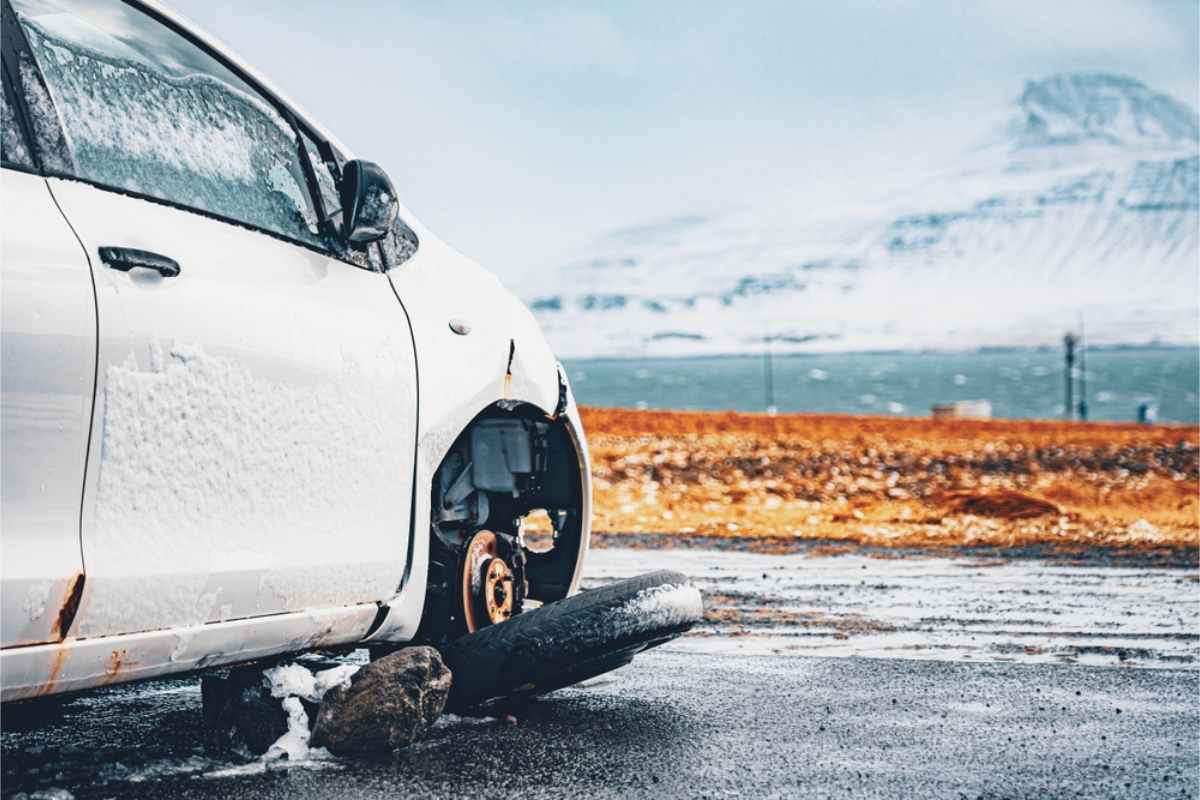
Scenic Highlights You Can Enjoy by Car
The following are some of the adventures you can look forward to when driving in Iceland in November:
Northern Lights Hunting by Car
If you have your own transport, you can be the captain of your own Northern Lights hunt whenever conditions prove to be ideal. Your Northern Lights experience won’t be bound by a tour guide and a specific tour date, and you can easily leave the confines of the city or town (and its light pollution) to hit those Aurora Borealis hot spots whenever conditions call for it.
Hot tip: pack yourself a thermos filled with a hot drink and a blanket or two – sometimes searching for the Northern Lights also requires a bit of patience.
Visiting Ice Caves with a Rental
When the colder months hit the island, it becomes time to explore the ice caves on the island again. These are usually kept closed during the warmer months of the year (if you’re uncertain of why, refer to Olof’s advise in the movie Frozen). Ice caves are incredible places.
Their icy walls still have streaks of black ash from volcanic eruptions that occurred thousands and thousands of years ago. And they’re filled with all sorts of interesting ice formations. Most ice caves can only be explored via guided tour due to safety reasons, but getting to the caves will mostly depend on you and your own transport.
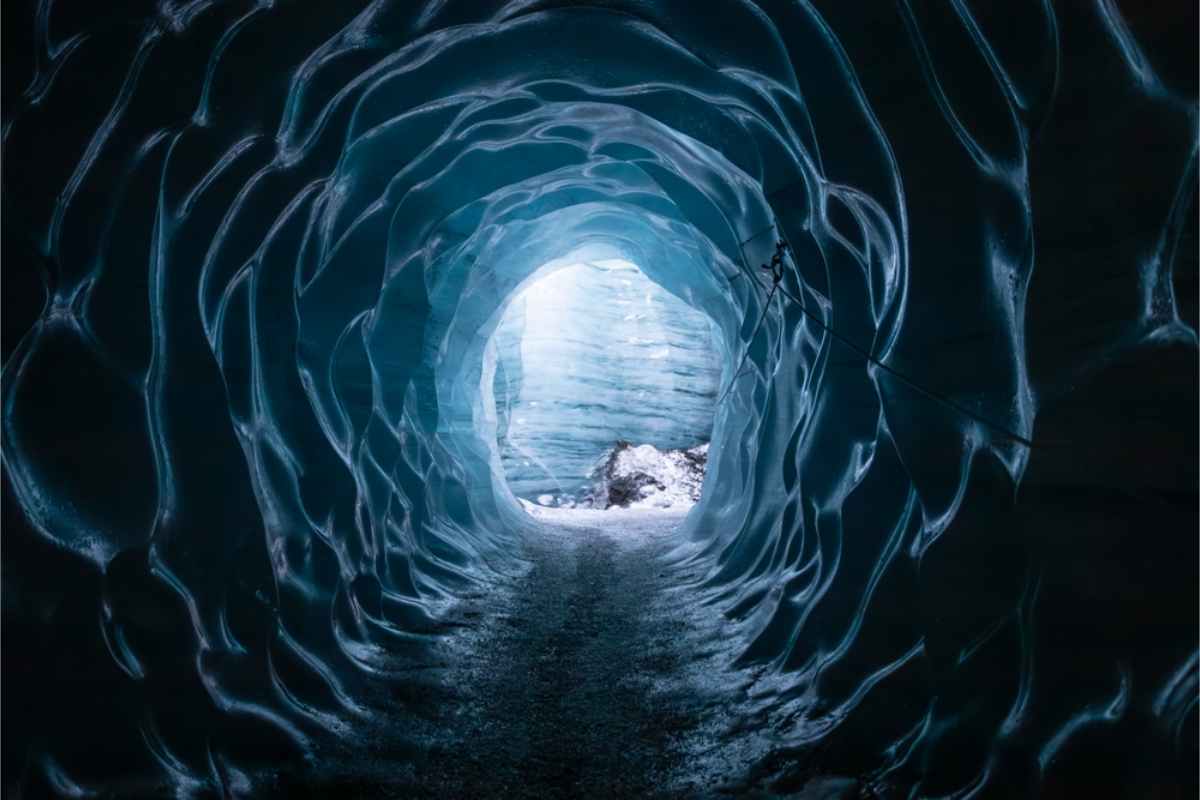
Geothermal Pools in a Winter Setting
Iceland is famous for its natural hot springs, and while you can still find many in their au naturel settings, others are used in our more modern geothermal pool resorts. When visiting the island in November, there’s no reason to give these a miss due to the colder weather conditions.
In fact, if you ask many of us locals, we’ll tell you that the best time to take a dip in a hot spring is during the colder months, when soaking in the warm water with the chilly breeze hitting your face can be extremely invigorating. Some even opt to have this as their chosen way of watching the Northern Lights dance across the sky!
November Events Worth Driving To
Icelanders don’t need an excuse to celebrate, so you’ll find plenty of hot events despite the cold. These include the following:
Iceland Airwaves Music Festival
Iceland Airwaves is the music festival of all music festivals held in the capital city of Reykjavik in early November each year. This festival showcases numerous artists (both local and international), playing music from various genres.
Icelandic Language Day
Icelandic Language Day is celebrated on the 16th of November every year. It is, as you may already have assumed, a celebration of our unique national language. On this day, you’ll find all sorts of events scattered all across the island.
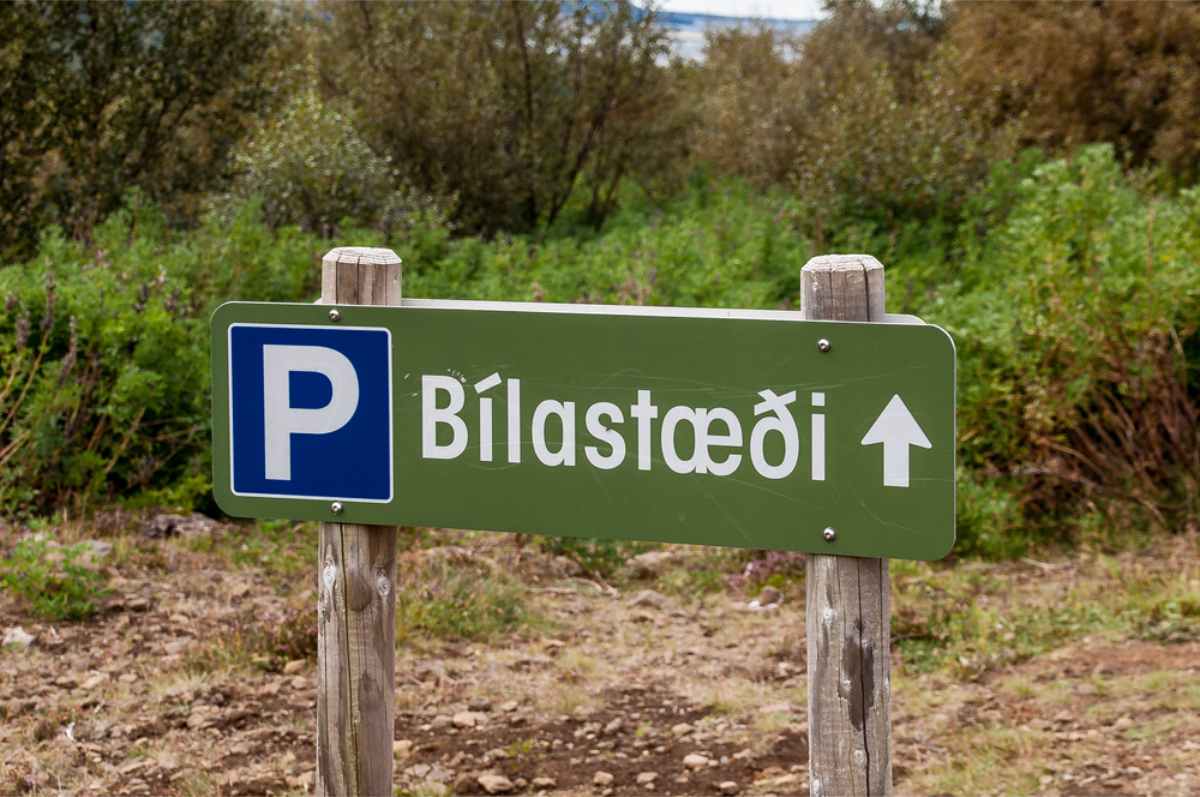
Reykjavik Christmas Market
Our Reykjavik Christmas Market already gets started in late November and operates till right before Christmas. Here you can do all your Christmas shopping!
What to Pack for a November Road Trip
We’re not going to tell you how to pack like you’ve never packed a day in your life. We will, however, highlight a few things that are island-specific or you may not have thought of. So, when you pack for your November road trip, please remember the following:
- Sweaters of wool and fleece (the tried and tested materials against the Icelandic cold).
- Waterproof clothing and gear, including hiking boots and a raincoat. This is not just to combat any sudden rainfall, but also to keep dry on our wet and muddy trails, as well as prevent you from getting drenched when visiting our powerful waterfalls with all their mist and spray.
- Shoes with sturdy soles. This is especially important when visiting later in November and when exploring the northern regions. You don’t want any mishaps when encountering icy or wet, slippery surfaces.
- Warm woolen hat (we recommend a beanie), scarf, gloves, and socks. Keeping your extremities warm is essential when driving in Iceland in November.
- Swimwear. Remember our hot springs?
- Quick-drying towel. You don’t want to be exploring the island while lugging around a bunch of wet towels.
- Headlamp. While many do remember to bring flashlights, we prefer a headlamp that ensures your hands remain free.
- Additional snacks and water (just in case). You can purchase these once on the island.
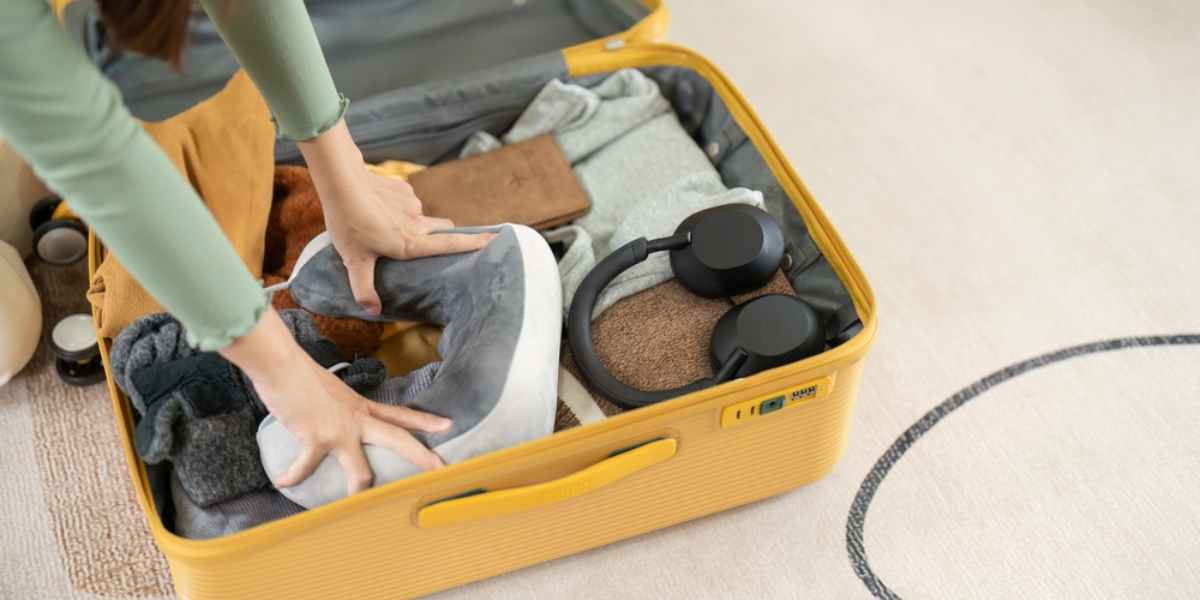
FAQs About Driving in Iceland in November
Below you will find the answers to some of our most frequently asked questions about driving in Iceland in November:
Is It Safe to Drive in Iceland in November?
Yes, it’s completely safe to drive in Iceland in November if you come prepared and take our advise in this guide. There’s no reason why you can’t experience the road trip of a lifetime during November here on the island.
Can You Drive the Ring Road in November?
Yes, you can drive the Ring Road in November. The Ring Road is one of our main roads, which means it’s paved and well-maintained. Just keep in mind that the northern parts of the Ring Road can be subject to challenging weather conditions and result in sudden road closures, especially in late November.
Are the F-roads Open in November?
No, the F-roads are not open in November. Most will already close by mid-September and will only start reopening from late May.
Do I Need Snow Tires When Driving in Iceland in November?
Yes, studded winter tires are a legal requirement from November to April. However, your rental agent will already have taken care of this, so you don’t need to be concerned about finding the right tires upon arrival here on the island.
Final Advice Before You Hit the Road
November means walking (or, rather, driving) that perfect line between seasons, so you’ll have all the perks without many of the downsides. Explore the ice caves without having to go head-to-head with our harsh winter conditions.
Enjoy full trip itineraries to fill all those daylight hours without having to worry about contending for a proper peak at our attractions due to peak season crowds. And admire the Northern Lights from the comfort of a local hot spring. So, what are you waiting for? Use our guide to prep and plan, rent a car in Iceland, and come have the Icelandic adventure of a lifetime!


 By
By

